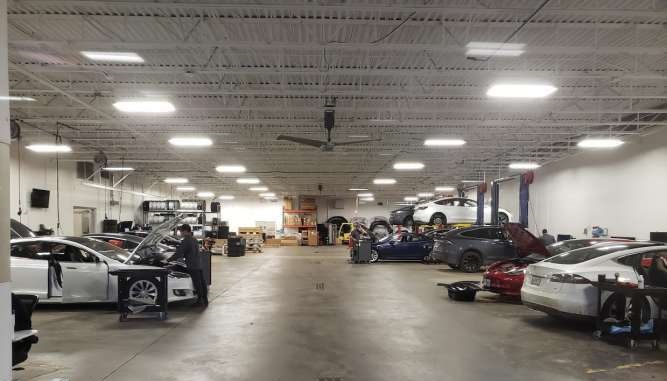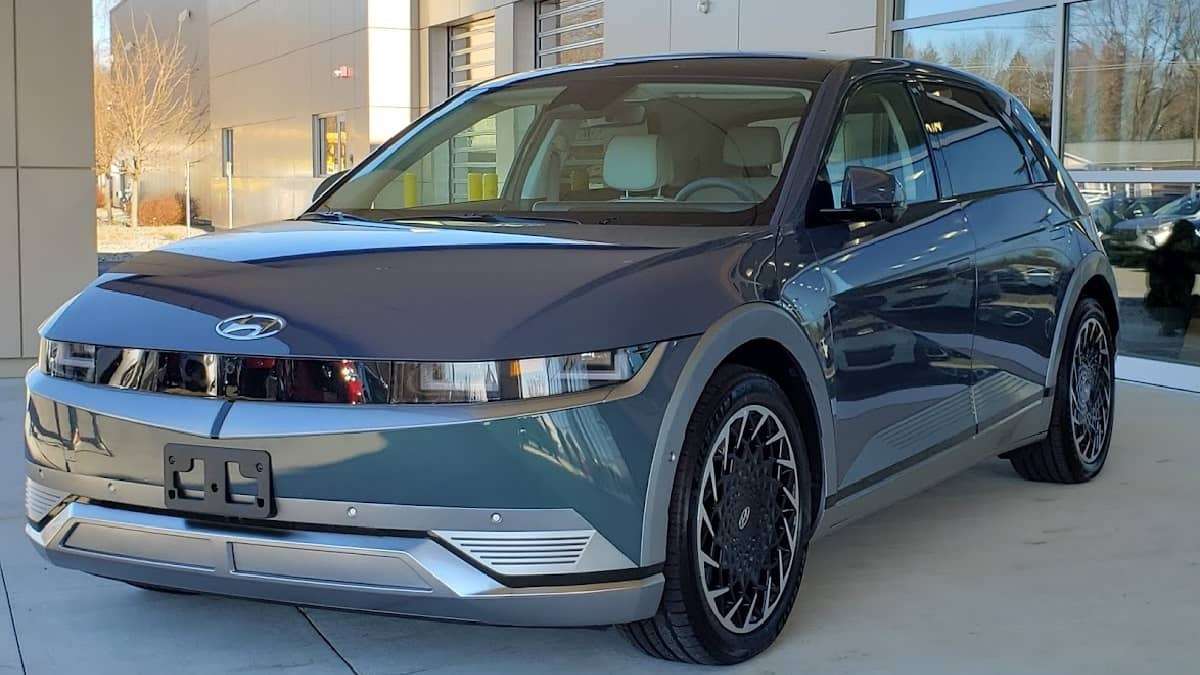This week, Hyundai launched its IONIQ 5. Not launched like Tesla launched its imaginary Cybertruck and Roadster a few years ago. Rather, launched in the sense that buyers give Hyundai money and Hyundai gives buyers a car. We drove an IONIQ 5 from dealer stock this week and discovered that it is in a sense a direct competitor to the Model Y, but in other ways, it is not. Here is our comparison. Please note that we have also driven the Model Y LR AWD.
Related Story: Tesla Model Y Sold Out Until After Holidays In Northeast
General Overview - Tesla Model Y vs. Hyundai IONIQ 5
The Model Y and IONIQ 5 are both five-door hatchback vehicles marketed by their manufacturers as crossover utility vehicles. We don’t wish to try to convince you they are not, but the “U” stands for utility, and it is hard to argue either is a very good utility vehicle (no spare tire, glass roofs, etc). Both have seating for five standard, but the Model Y, which seems to be a smidge larger inside, can also add two rear jumpseats. This is a big plus for the Model Y in our opinion. So, any overlap in these models is limited to the five-passenger Model Y. Also, the Model Y can be configured to be a performance vehicle. The IONIQ 5 cannot. The IONIQ 5 really compares best (if at all) to the lowest-cost Tesla Model Y LR AWD. To put it simply, the Model Y goes beyond what Hyundai presently offers in its IONIQ line. At least for now. Genesis has some BEVs coming that could be closer to Model Y competitors at the high-end.
Related Story: Hyundai Begins Deliveries of IONIQ 5 On East Coast
Cost Comparison - Tesla Model Y vs. Hyundai IONIQ 5
One way the Hyundai IONIQ 5 simply blows away the Model Y LR AWD is consumer cost. Tesla has been increasing the cost of its products in multiple ways as of late. At the time of this story’s publication, the least expensive Tesla Model Y LR AWD (five-passenger) with the deletion of the standard wheels for the less expensive wheels is as follows:
Tesla Model Y LR AWD (5-passenger) vehicle cost $58,990
Tesla Destination and delivery cost $1,200
Tesla Order fee $250
Total consumer cost for cheapest Tesla Model Y = $60,440
There is no federal tax incentive for the Model Y at this time. Also, in our state of Massachusetts, the Model Y is excluded from the EV rebate of $2,500 because it is higher than the $50,000 MSRP threshold. So, the cost that the consumer will bear is $60,440, plus taxes and registration fees that are not paid to Tesla but to your state.
Now, let’s configure the consumer cost of a Hyundai IONIQ 5. We will ignore the base model since it is a lower-performance model that we feel exists to highlight a low entry cost. Instead, let’s jump up to an AWD IONIQ 5. This is a model with a 320 hp powertrain, all-wheel-drive and dual motors.
Hyundai SE AWD vehicle cost (MSRP) $47,150
Hyundai Destination and Delivery $1,225
Dealer Prep and Doc fees (approximate) $400
Dealer Add ons like paint protection etc. (approximate) $ 1,500
Federal tax incentive -$7,500
State of Mass Rebate -$2,500
Consumer Cost before dealer market adjustments (if any) = $40,275.
There are two ways to look at the price difference between these two vehicles. One way is that the Model Y costs 50% more than the IONIQ 5 ($20K is 50% of $40K). Or, you can say that the IONIQ 5 is 33% less expensive than the Model Y. ($20K is a third of $60K). We don’t care how you look at it, the IONIQ 5 is a dramatically less expensive vehicle to the consumer. You can use your state and local EV incentive costs to calculate exactly how your comparison would work out.
Related Story: Four Things Missing From the New Hyundai IONIQ 5 Battery-Electric Vehicle
If you don’t need or want AWD, and you are OK with the less powerful motors and lower range, the real-wheel drive IONIQ 5 Standard Range has a vehicle cost (MSRP) of $39,700. You can do the math, but it brings the IONIQ 5’s cost down to about half that of the Model Y’s entry model. Hyundai offers seven distinct trim levels from which an EV shopper can choose. The most expensive IONIQ 5 has an MSRP of $54,500. When we do the full accounting, that one has a consumer cost of about $50K.
 Warranty and Included Maintenence Comparison - Tesla Model Y vs. Hyundai IONIQ 5
Warranty and Included Maintenence Comparison - Tesla Model Y vs. Hyundai IONIQ 5
Consumer cost does not end with the purchase day transaction. Maintenance and repair costs are a meaningful part of the cost of ownership of any vehicle, including EVs. Here, Tesla and Hyundai differ. Hyundai offers three years of included maintenance on all of its models. That includes things like filters, tire rotations, and system checks. Tesla offers no included maintenance. Tesla’s tire maintenance schedule is every 6,250 miles or sooner, depending on tire wear. You can learn more about Tesla’s maintenance needs at this link.

More importantly, Hyundai has the industry’s "best warranty." Five years bumper to bumper and ten years or 100,000 miles on the powertrain. Details of this warranty can be found here on Hyundai’s warranty page. Tesla’s warranty is respectable but differs by model, which we find ridiculous. The Model Y seems to have a 4-year bumper-to-bumper comprehensive warranty and an 8-year, 120,000-mile powertrain warranty with some fine print. You can view it here on Tesla’s warranty page yourself.
 Energy Cost Comparison - Tesla Model Y vs. Hyundai IONIQ 5
Energy Cost Comparison - Tesla Model Y vs. Hyundai IONIQ 5
Tesla highlights fuel savings on its public-facing vehicle price page. The fuel savings are simply ridiculous and wildly wrong by comparison to any similar green vehicle. You can see the EPA’s estimated energy cost difference between the Model Y and IONIQ 5 above. Bear in mind, that is based on 15,000 miles per year and nationwide average electricity costs. Electricity costs vary widely from region to region and even town to town across America. And many EV owners also opt-in for solar power. Hyundai offers IONIQ 5 owners two years of no-cost public charging at Electrify America's 670 U.S. locations. Tesla does not offer free charging at its Superchargers nor at any franchised charging locations.
This being a price comparison, we’ll skip the features and benefits comparison between the two brands and individual models. Tesla’s Supercharger network of private high-speed charging stations is a definite plus for Tesla. As is its mobile service option. Hyundai, by contrast, has a much larger service network and boasts that its new IONIQ 5 charges on DCFC faster than does a Tesla Model Y.
What Do You Think?
Tell us in the comments below if you feel the Model Y and IONIQ 5 overlap as competitors, or if you view the much more expensive Model Y as an offering in a different segment. If you do, tell us how you’d describe that segment.
Image of Hyundai IONIQ 5 by John Goreham. Hyundai Warranty Image by John Goreham. Image of Tesla service center by John Goreham. Comparison image of IONIQ 5 vs. Tesla Model Y courtesy of EPA.
John Goreham is a long-time New England Motor Press Association member and recovering engineer. John's interest in EVs goes back to 1990 when he designed the thermal control system for an EV battery as part of an academic team. After earning his mechanical engineering degree, John completed a marketing program at Northeastern University and worked with automotive component manufacturers, in the semiconductor industry, and in biotech. In addition to Torque News, John's work has appeared in print in dozens of American news outlets and he provides reviews to many vehicle shopping sites. You can follow John on TikTok @ToknCars, on Twitter, and view his credentials at Linkedin
Re-Publication. If you wish to re-use this content, please contact Torque News for terms and conditions.






Comments
Both cars are in the same
Permalink
Both cars are in the same segment, just different interpretations. Once supply and demand get's in balance, Tesla will have to offer standard range RWD configurations to stay competitive. $20K is a massive difference. I have a MY LR AWD on order right now for delivery in Feb~Mar, just as a placeholder in the hopes they will offer a SR RWD by then, but I now realize it won't happen that soon. As soon as I can drive the Audi Q4 and KIA EV6, hopefully January, I will choose between them and pocket the $20K......and of course cancel my MY.
Indeed. $20K is another entry
Permalink
In reply to Both cars are in the same by gery s katona (not verified)
Indeed. $20K is another entry-level electric car. At least before the global shortages. Bolts were costing consumers in my state $20K this past spring - new.
Since we are retired the #1
Permalink
Since we are retired the #1 item is purchase cost and #2 is operating expenses. The IONIQ 5 comes out ahead in these two items for out of pocket.
Tesla has the recharging network in place and that is a giant plus. But we rarely drive more than 180 miles one-way, the rest of the miles are around town.
Since at least 50% of our recharging would be at home, that discounts the advantage of Tesla's network.
We are a year away from a purchase so we will follow closely the Korean EVs.
Thanks for commenting, Thom.
Permalink
In reply to Since we are retired the #1 by Thom Thompson (not verified)
Thanks for commenting, Thom. Indeed, I like Hyundai's value proposition. Three years of included maintenance (not that it's much anyway) and a warranty unbeaten by any competitor. I think a lot of folks on fixed incomes may see that as a big plus. No surprises!
Three years of free
Permalink
Three years of free maintenance is a misnomer for full EVs - in over three years of driving eGolf, all maintenance required was tire rotation. Seniors like myself must look for cost of ownership versus safety (as our reflexes and awareness wane). Advanced and self updating autopilot features become more and more important with each passing year. That is the one aspect where long term ownership of Tesla cannot be beaten at this point of time by any other manufacturer. 20K difference does not seem that much if it saves you from hospital or loosing your licence and independence.
Great overview! Would love
Permalink
Great overview! Would love your POV given 2023 pricing changes...e.g.,
Model Y price decrease
New incentives
Thanks